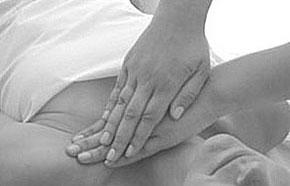Your osteopathic consultation will involve
a detailed assessment in order to make a clinical diagnosis and select the appropriate treatment.
 Assessment
Assessment
Full case history
Examination
Diagnosis
Osteopaths have undergone an extensive four-year course including anatomy physiology, and pathology. This knowledge enables them to analyse your problem and diagnose your complaints using a variety of clinical skills, backed up where necessary by x-rays and other tests. If necessary, you will be referred to a specialist via your GP for a second opinion.
A general examination is carried out including looking at the posture and movements of the body, checking muscle tone, reflexes and integrity of the nervous system. Treatment will commence once a working diagnosis is explained to you.
Treatment
Osteopaths use their hands both to investigate the underlying causes of pain and to carry out treatment using a variety of manipulative techniques. Listed below you will see a list of a variety of techniques.
The treatment is normally quite short however complicated cases require more consideration and discussion, so although it is best to allow one hour for your initial consultation and half an hour for subsequent treatments, individual sessions may work out to be either shorter or longer.
The number of treatments and spacing between treatments will vary depending on the presenting problem. Prevention is the most important philosophy at this practice.
Conditions which may be helped by osteopaths:
• generalised aches and pains
• joint pains including hip and knee pain from osteoarthritis as an adjunct to core OA treatments and exercise
• arthritic pain
• general, acute & chronic backache, back pain (not arising from injury or accident)
• uncomplicated mechanical neck pain (as opposed to neck pain following injury i.e. whiplash)
• headaches arising from the neck (cervicogenic) I migraine prevention
• frozen shoulder/shoulder and elbow pain/tennis elbow (lateral epicondylitis) arising from associated musculoskeletal conditions of the back and neck, but not isolated occurrences
• circulatory problems
• cramp
• digestion problems
• joint pains, lumbago
• sciatica
• muscle spasms
• neuralgia
• fibromyalgia
• inability to relax
• rheumatic pain
• minor sports injuries and tensions
